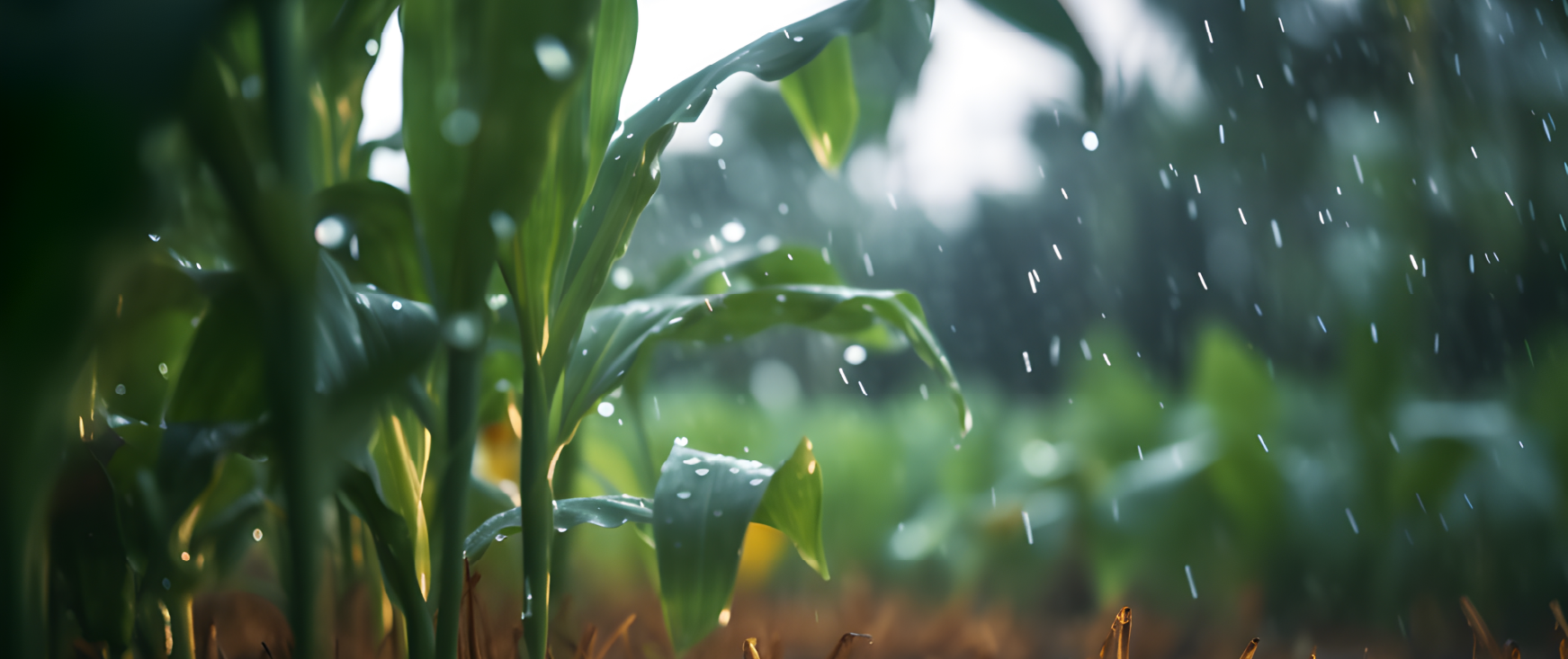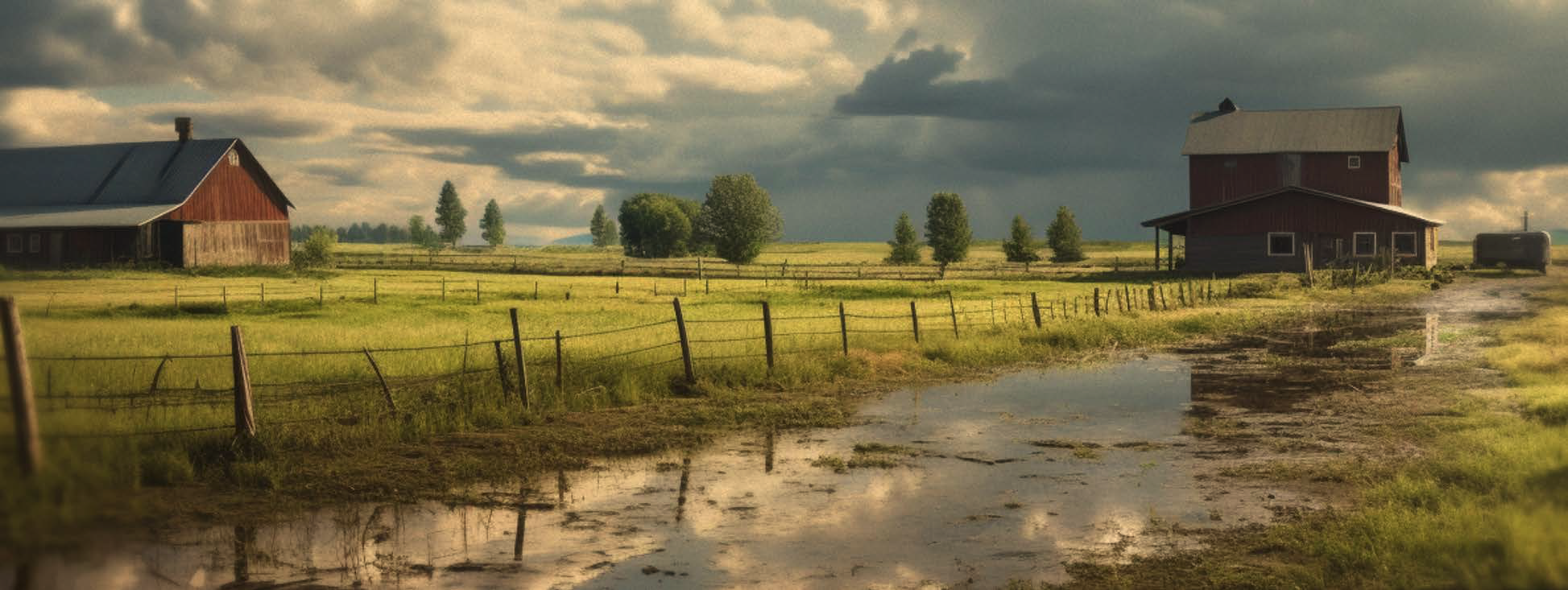RISING ABOVE THE ELEMENTS: Key Strategies for a Resilient 2025 Growing Season
In 2024, many growers had a good feeling of the year and have forgotten how it started with struggles last spring. It’s easy to get wrapped up in the moment during planting, which is why it’s important to take time in the winter for reflection and planning.
That’s why Carrie MacLean likes the word “persistence” when describing the 2024 growing season and applying those lessons for 2025. For many growers across Ontario, last spring marked a tough start. Most growers faced heavier-than-normal amounts of moisture and made the tough choice to “plant on” into less-than-ideal conditions, “Then, looking back a couple of months later, people realized that was the thing to do, because the perfect conditions never materialized,” says MacLean, Central Ontario Sales Agronomist for Pride Seeds.
“Weather conditions across the province are definitely changing, creating new challenges, which seem to be emphasized in some areas. You expect rain in the spring, but we’re talking half an inch or a couple of tenths of an inch, but they’re getting two inches, three inches at a time, and that requires a new level of grit and persistence to get through."

It also requires growers to look at their farms on more of a per-acre basis, working to understand their acres and managing each based on its overall performance potential. MacLean believes more growers are doing that, including tiling parts of a field where moisture hadn’t been an issue or seeing the value of split applications or the use of slow-release nitrogen products. It’s an added expense, but given the changing environmental conditions and the less-forgiving nature of farming, it’s become another management consideration.No two farms equal
There’s been a recognition that one farm can differ greatly from another. The progressive farmers have already made that transition yet MacLean acknowledges it’s a difficult thing to do after listening to talk at the local coffee shop.
“The easiest thing to do is to compare yourself to your neighbours,” she adds, noting how unhelpful it is. “At the end of the year, many operations do acknowledge that there’s a wide variability across the land and they do take those differences into account when making decisions. It’s important to listen and share ideas and what has worked, but it’s also important to acknowledge that what works for one farm may not be the silver bullet on your operation.”
She notes those comparisons still take place and tend to peak right around the time when seed sales are in the works. A grower may ask why their neighbour’s fields performed better last year without accounting for the differences in managing a field versus managing by the acre.
It’s in that same “no two farms” approach that MacLean advocates for a deeper analysis of last year’s results and using those details to make more-informed decisions for 2025. Although it’s not possible to “weather-proof” a crop, it’s certainly feasible to mitigate risk by attending to a few lessons from 2024.
“From a seed perspective, you can’t choose the one that won at the plot at a neighbour’s farm -you need to incorporate multiple hybrids,” says MacLean, adding that yield is no longer the sole determinant. “You have to look at variables like early-season stress tolerance, and whether these plants get out of the ground if I’m putting them in cold, wet soils.”

Growers also must consider trait requirements, disease tolerance, incorporating different maturities, soil type, hybrid or variety growth habits and matching plant architecture to your management (such as fertility, row width and soil quality). Are you planning for the top producing acres and looking for that racy hybrid, and treating that differently than the lower productivity acres that may struggle with tight, cool spring soils or a sandier soil that’s drought prone?
The 2024 growing season saw a large number of farmers switching their corn hybrids and soybean varieties in the spring. She acknowledges the tendency and will to grow the longest heat-unit corn in order to get the most bushels per year, and agrees that a racehorse hybrid can be the lead in pushing maturity.
“But you have to spread the risk and that means pairing that with a shorter-season maturity hybrid,” says MacLean. “Something with a little more grit for the tougher acres, or if things get tough with the weather, like flooding in the spring.”
Disease a bigger threat
For growers in the southwestern part of the province, tar spot in corn has become entrenched but in 2024, it was introduced to those in MacLean’s region of Central Ontario, courtesy of storm winds from the southern U.S. The saving grace -and a misleading notion for 2025 -was that conditions dried out with the approach of late summer; it could have been devastating but most growers escaped with excellent yields. That may provide a false sense of security, however, and growers further north and east in Ontario need to follow the lead of their counterparts in the extreme southwest, where they know the value of pencilling in a fungicide application.
“It’s a given because they’ve seen the yield losses they can get when the disease moves in hard and early,” says MacLean. “This year, I did some fungicide side-by-sides and even in a situation where tar spot didn’t have a large visual impact, I was seeing yield increases in rows next to each other, of 10 to 15 bushels, which is significant.”

That’s why early conversations with growers are so important, including a remedial on the fundamentals of the“disease triangle”, with corn as the host and the tar spot pathogen now present. All that’s needed is the appropriate environment.
One last note
The importance of multi-year data is something MacLean also stresses. She looks after plots on an annual basis and those include Pride’s current commercial line-up as well as a number of the company’s experimental lines.
“Getting to know how they compare and contrast year-over-year is what helps me make recommendations when having discussions with dealers and growers,” she notes. “Having multiple years of data helps you understand the potential of a certain hybrid or variety, as well as understanding any weaknesses. As we see weather trends changing and the increase of new diseases, like tar spot, having an idea of where your problem spots are going to be on your own farm is what will come to light with multi-year data.”

